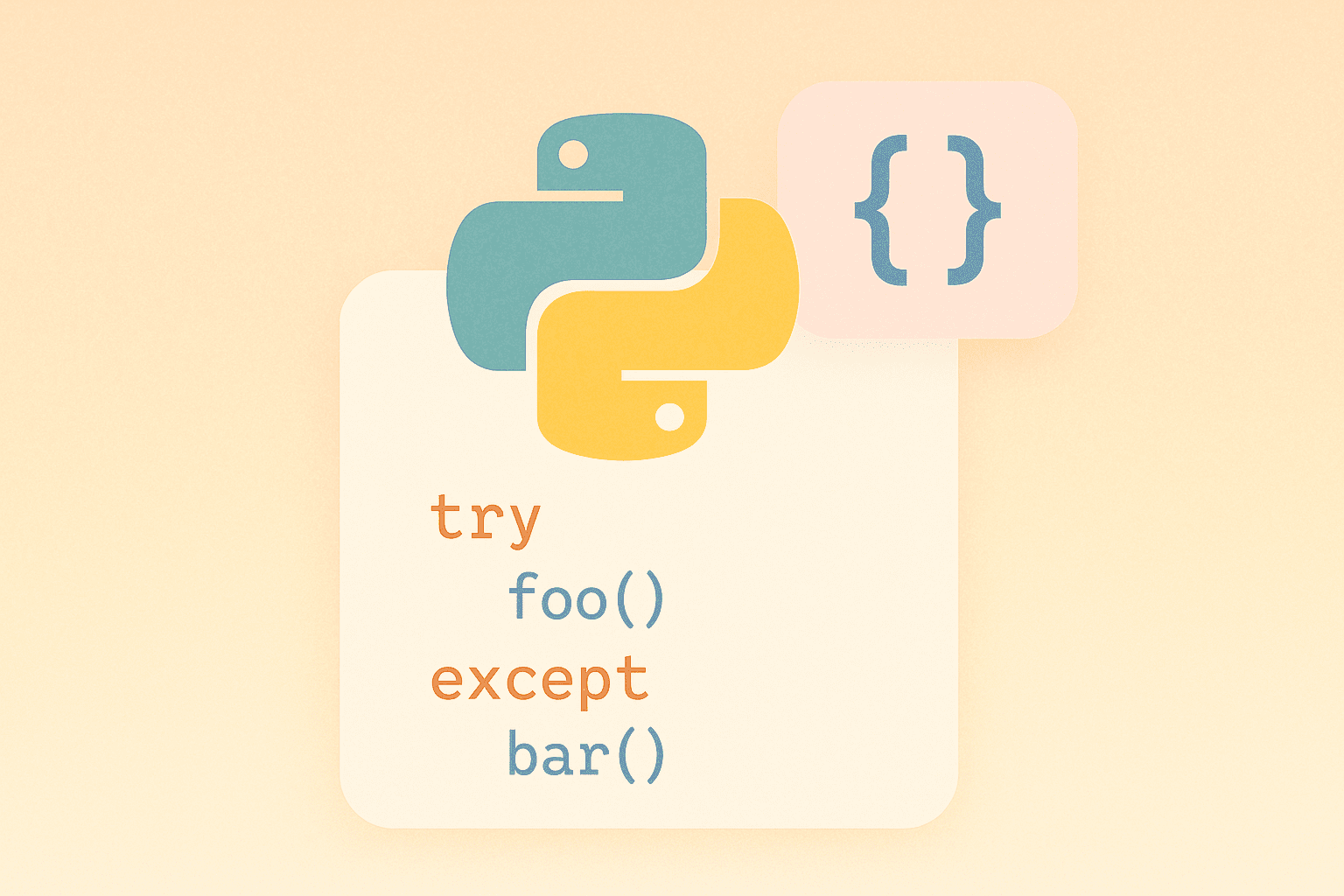Error handling is one of the most important concepts in Python programming. When you write code, errors can occur for many reasons—wrong input, missing files, or incorrect data types. Python provides a powerful and easy way to handle these errors using the try and except blocks. This tutorial will explain the basics of Python try-except, how it works, and how to use it effectively in real-life examples.

What is Try Except in Python?
The try and except statements are used to handle exceptions (errors) in Python. The code inside the try block is executed first, and if an error occurs, the program immediately jumps to the except block instead of stopping execution. This prevents the program from crashing and allows you to handle the error gracefully.
Basic Syntax of Try Except
try:
# Code that might cause an error
except:
# Code to handle the error
This is the simplest form of try-except. However, it’s better to handle specific exceptions rather than using a general except block. Let’s look at an example.
Example 1: Handling Division by Zero
try:
number = int(input("Enter a number: "))
result = 10 / number
print("Result:", result)
except ZeroDivisionError:
print("Error: You cannot divide by zero.")
except ValueError:
print("Error: Please enter a valid number.")
Explanation: In this example, two common exceptions are handled:
- ZeroDivisionError – occurs when dividing by zero.
- ValueError – occurs when converting a non-numeric string to an integer.
Using multiple except blocks makes your code more reliable and easier to debug.
Example 2: Using Else and Finally
Python also provides two additional clauses with try – else and finally.
try:
num = int(input("Enter a number greater than 0: "))
print("You entered:", num)
except ValueError:
print("Invalid input. Please enter a number.")
else:
print("No errors occurred.")
finally:
print("Execution complete.")
Explanation:
- The
elseblock runs only if there are no exceptions. - The
finallyblock always executes—whether an error happens or not. It’s often used for cleanup tasks like closing files or releasing system resources.
Example 3: Handling Multiple Exceptions Together
try:
data = int(input("Enter a number: "))
print(100 / data)
except (ValueError, ZeroDivisionError) as e:
print("An error occurred:", e)
In this case, we handle both ValueError and ZeroDivisionError in one block. The as e part stores the error message inside a variable, allowing you to print or log it easily.
Example 4: Using Try Except in Real-Life Scenarios
Let’s say you are building a program that reads a file. If the file doesn’t exist, Python will raise a FileNotFoundError. Instead of letting your program crash, you can handle the error properly.
try:
with open("data.txt", "r") as file:
content = file.read()
print(content)
except FileNotFoundError:
print("The file was not found. Please check the file name.")
finally:
print("Program finished.")
This method is especially useful in file handling, network programming, and database operations where errors are common.
Example 5: Raising Custom Exceptions
Sometimes, you may want to create your own error conditions using raise.
try:
age = int(input("Enter your age: "))
if age < 0:
raise ValueError("Age cannot be negative.")
print("Your age is:", age)
except ValueError as err:
print("Error:", err)
This example demonstrates how to trigger custom error messages when specific conditions are not met.
Why Use Try Except?
Here are some key benefits of using try-except in Python:
- Prevents your program from crashing unexpectedly.
- Allows you to handle different types of errors gracefully.
- Makes debugging and maintenance easier.
- Improves user experience by providing informative messages.
Best Practices for Try Except
- Always catch specific exceptions (e.g.,
ValueError,FileNotFoundError). - Avoid using bare
except:unless necessary. - Use
finallyfor cleanup tasks. - Log errors for debugging in production systems.
Conclusion
The try except block is an essential feature in Python that helps handle runtime errors gracefully. Whether you’re a beginner learning basic Python or an experienced developer working on large applications, mastering try-except will make your code more reliable and professional. Remember to use it wisely and always handle specific exceptions for better debugging and performance.

